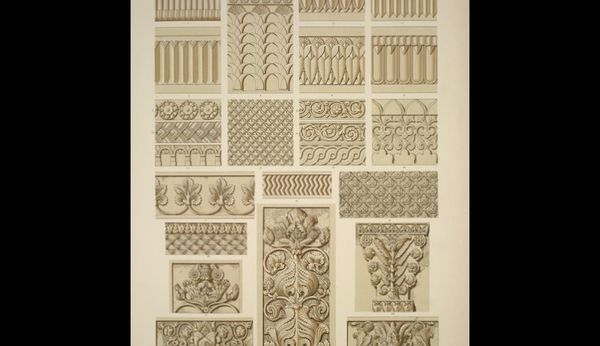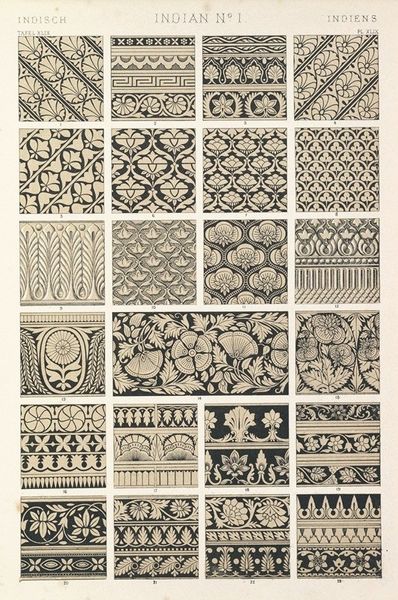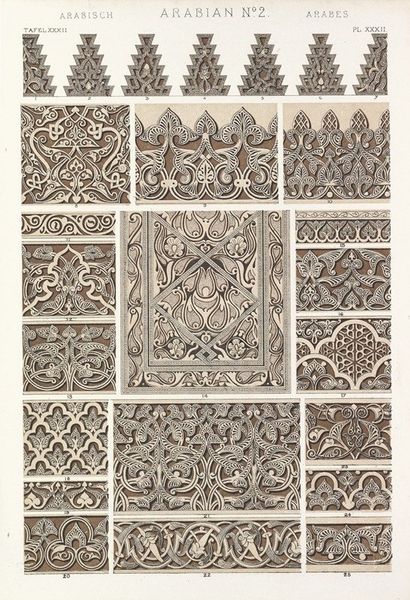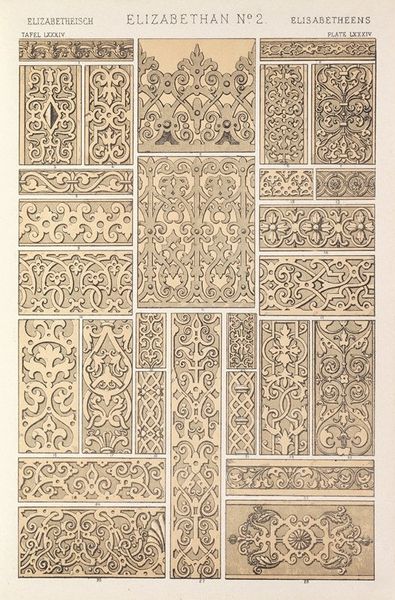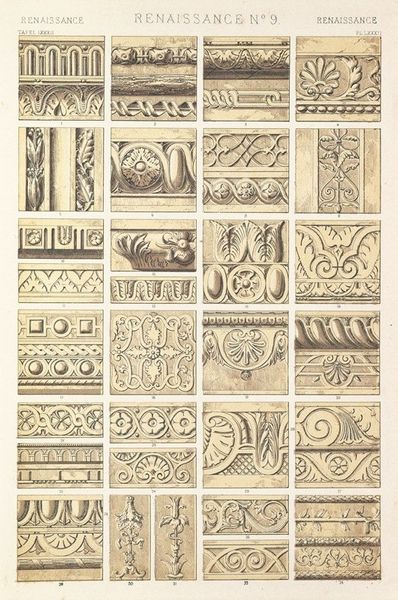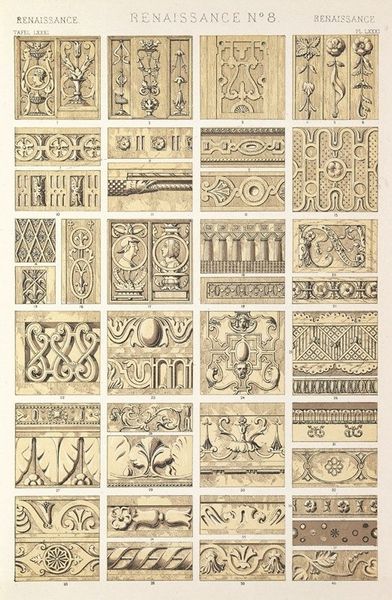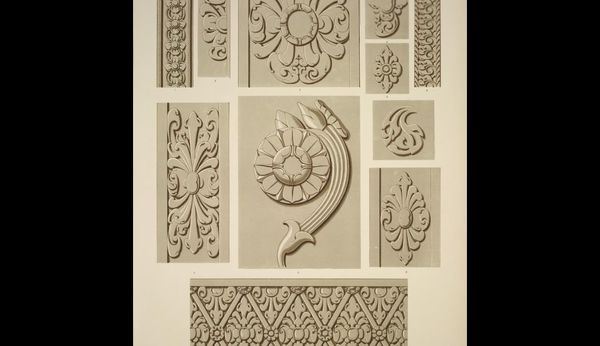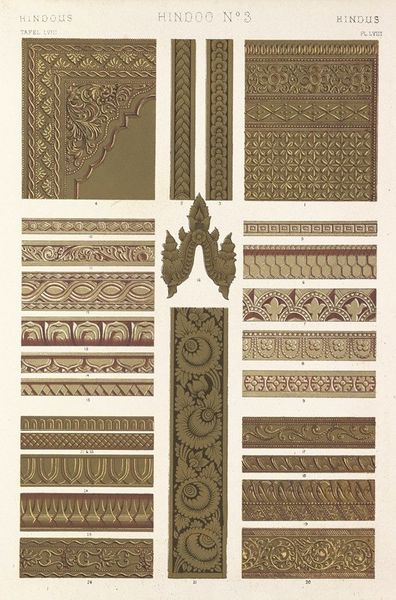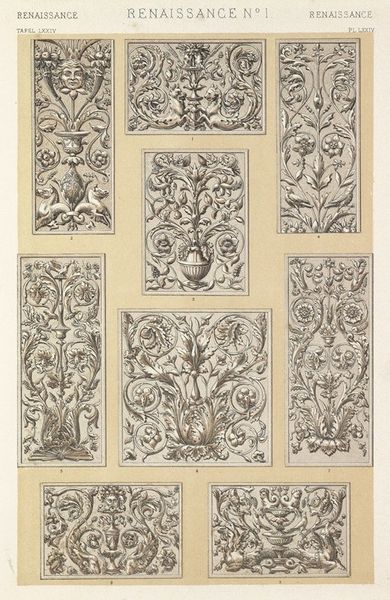
drawing, graphic-art, lithograph, print, textile
#
drawing
#
graphic-art
#
lithograph
# print
#
textile
#
geometric
#
fabric design
#
line
#
pen work
#
islamic-art
#
textile design
#
layered pattern
Copyright: Public Domain: Artvee
Curator: Owen Jones created "Nineveh & Persia No. 3" in 1856, a lithograph showcasing various Assyrian and Persian decorative motifs. What strikes you most when you first see this array of patterns? Editor: The meticulous craftsmanship! I'm drawn to the way the shapes are constructed from tiny elements. Each section seems like an exploration of different manufacturing techniques that echo handcraft, even as a printed image. Curator: Indeed, Jones' work reflects the intersection of art and industry that was burgeoning in the mid-19th century. This was during a time when Victorian design reformers, like Jones, were looking at historical examples to understand how design could be used for social change. The goal was to improve mass-produced items. Editor: Mass production and craft is exactly where my head goes. Given the reference to Nineveh and Persia, I wonder about the socio-political context through which such patterns traveled. Who got to decide what was reproduced, and for whom? Curator: Absolutely. Jones saw Islamic art as an antidote to what he perceived as the chaotic design principles of the West. He believed that understanding the geometric order of these designs could reform Western manufacturing practices. But this appropriation also intersects with Orientalist narratives. It raises questions about the colonial gaze, power dynamics inherent in selecting and reinterpreting these motifs for a Western audience. Who profits, both culturally and economically, from this kind of adaptation? Editor: It also speaks volumes about how we classify "art" versus "design." Jones positions himself within industrial design but draws from ancient cultural material for legitimacy. You can see the influence in subsequent decorative arts. It makes me consider where "Nineveh & Persia No. 3" circulates now—perhaps in textbooks, digital pattern libraries, or as a reproduced print available to design students. Curator: I agree. Today, we continue to grapple with questions of cultural appropriation and equitable representation within creative fields. Jones’s lithograph offers a compelling, if complicated, example of how historical artifacts are reimagined through contemporary values. Editor: It serves as a reminder that any reproduction carries not just the original information, but a trace of the entire journey between then and now.
Comments
No comments
Be the first to comment and join the conversation on the ultimate creative platform.
